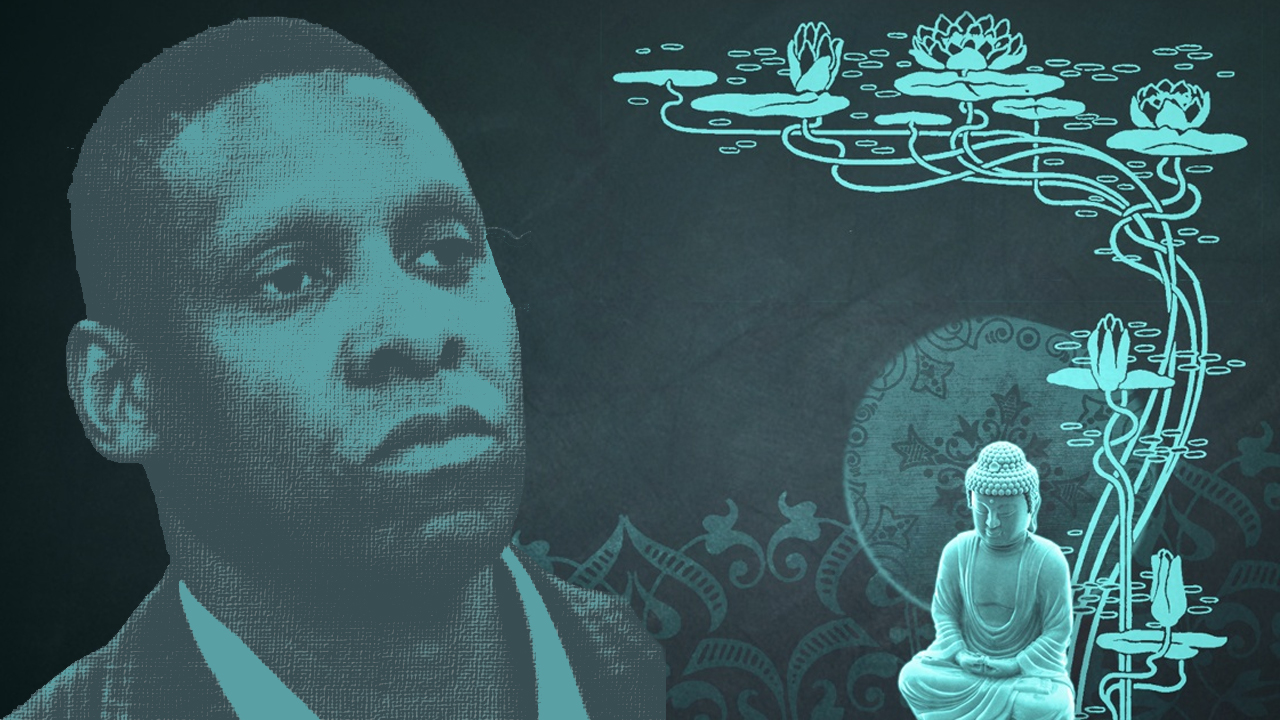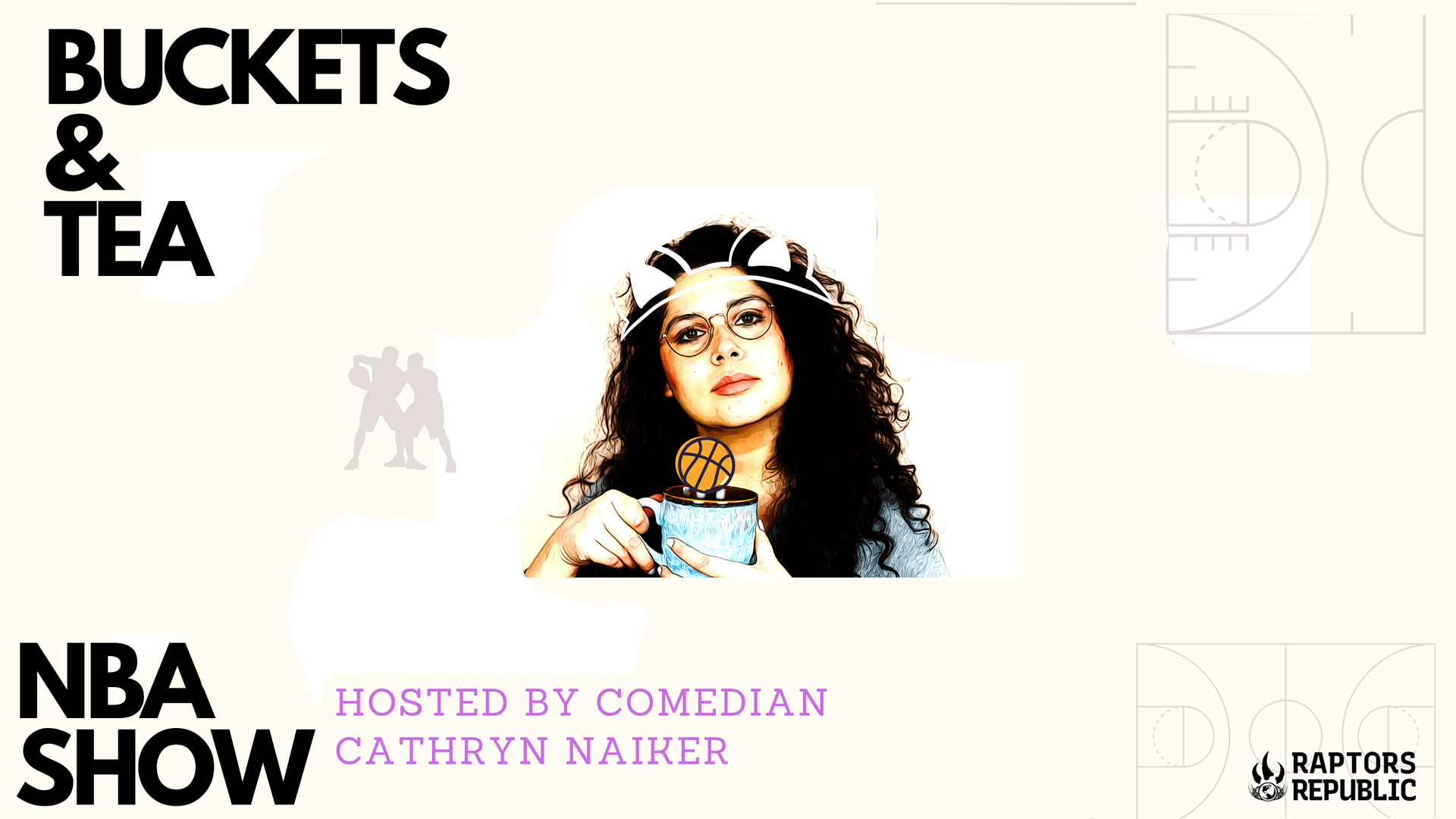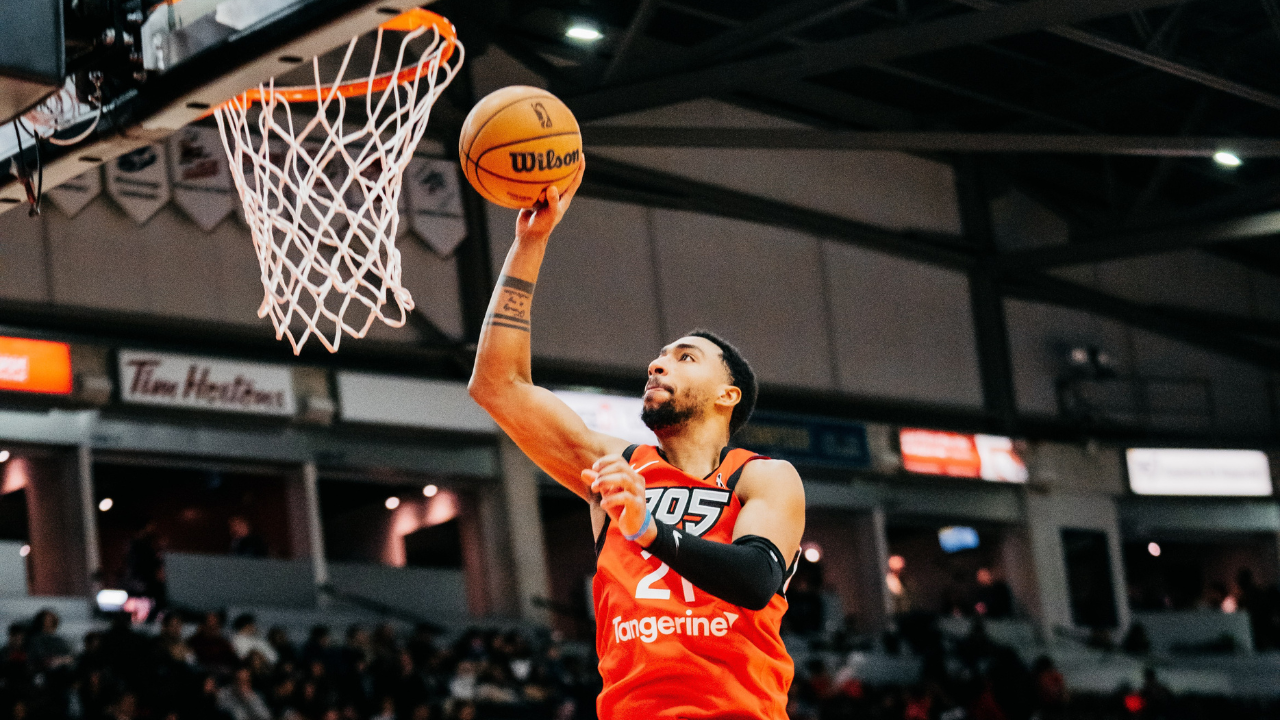The Toronto Raptors, as currently equipped, could be in line to pick four or more rookies this upcoming draft. That would involve their own pick not conveying to the San Antonio Spurs, meaning it falls within the top six of the lottery. But it would be possible, after acquiring a 2024 second-round pick in exchange for OG Anunoby and two 2024 first-rounders in exchange for Pascal Siakam, in addition to their own selections. But: Masai Ujiri himself said the Raptors will likely not be selecting so many rookies all at once.
“We have to look at [those picks] as flexibility. You can consolidate these picks [in another trade]. You don’t have to pick them,” he said in a press conference to assembled media on Jan. 18. “Are we going to take three picks in the draft? I strongly doubt it. That’s not the plan for now.”
Which means there’s more to come. Which, Ujiri said that too; he said there were “definitely” more trades to come. That is likely to mean outbound players, such as Chris Boucher, who will likely contribute more to a good team than to this current Raptors’ squad. But it is also likely to mean inbound players. And good ones, too. That’s how the Raptors are operating, finding good players already within the league, with the latent abilities to grow into more.
The Raptors traded Anunoby for more player value than pick value. Immanuel Quickley has been solid in Toronto, even if he’s making mistakes learning to run a team. RJ Barrett has been the strong left hand of the lord. And while Siakam’s trade was more about the picks, Jordan Nwora has certainly seemed like a valuable player to have within the organization.
Who else should the Raptors target?
If the Raptors want more shooting — and they should because the team still doesn’t have enough — then Quentin Grimes should be a target. While one might think the New York Knicks would value him more with the bench depth provided by Quickley gone, he has only averaged an extra minute or two per game more since Anunoby became a Knick. And he is likely only available because he’s in the midst of a poor season, with his minutes, scoring, and efficiency all way down this year.
But Grimes is the exact type of player that the Raptors seem to need: a shooting guard with movement shooting skills and who can guard the point of attack on the defensive end. Quickley is a very strong defender, but he’s better off the ball than on, and the Raptors haven’t had someone able to break up actions for opposing star guards. Grimes can do that, as he’s been one of the best pick-and-roll defenders in the league this year, right in line with Jaden McDaniels or Nickeil Alexander-Walker when it comes to frequency of picks defended and efficiency allowed.
And the shooting — oh man, the shooting. He has a flamethrower trigger, and he gets them up with great frequency, at the 40th-highest rate per possession in the league. He is a movement shooter, particularly deadly doing the Fred VanVleet (sprinting into a dead stop in transition to fire a triple). He’s not yet a deadly pull-up shooter, but he has no fear of taking the shot. He is much more effective on pull-ups going to his left, which is normal for a right-handed shooter. But the mechanics do look cleaner and more balanced going that direction.
Grimes isn’t everything the Raptors need. He’s a low-volume and low-efficiency driver, and he doesn’t take very many shots at the rim. While he was quite efficient at the rim last year, he’s been atrocious this year; the truth is probably somewhere in the middle. He gets blocked quite a bit in the paint because he often tries to go through or over defenders whom he shouldn’t, and he can get bumped off his lines due to his slender frame. He is very right-hand dependent. On the plus side, he stampede cuts well and he has a full bag of gathers, and he sees a lot of layups roll off the rim. That could be poor touch or poor arm deceleration, but he is a versatile driver, at the very least. When it looks good, it looks great.
He still smokes a lot of those same finishes. If he finishes them well, then we’re talking about an enormous contributor to winning. The shooting is a sure thing, despite the down year this season. The defense is great. Toronto needs his exact skill-set on the roster, and the Knicks seem to both be willing to trade Grimes and covetous of Bruce Brown jr. Grimes is 23 years old and has solid size for a shooting guard, standing 6-foot-4. In almost 2000 minutes together between Grimes and Quickley, the Knicks had a net rating of plus-8.7 during their careers together, much better than with either on and the other off, or both off. (That’s not quite Jokic-Murray or Kawhi-PG level, both of which duos at plus-12 for the last three seasons, but Quick and Grimes are right in the second tier for high-volume duos. It’s much better than the three-year on-court net ratings of, say, LeBron-Davis or Siakam-Anunoby. It’s right in line with Giannis-Middleton. This is an insane three year on-court net rating we’re talking about.)
Acquiring Grimes would probably be a home run for Toronto at the cost of Brown — even at the cost of Brown and a pick. He is a restricted free agent after next season, meaning the Raptors would be able to keep him a Raptor for a long time to come.
Other players can fill the same archetype, although perhaps not to the same effect. The platonic ideal is prime Klay Thompson — a flamethrowing shooting guard who defends point guards the other way — but Kentavious Caldwell-Pope is just about as good as it gets there, too. AJ Griffin, Dorian Finney-Smith, Davion Mitchell, Moses Moody, Jaden Hardy, Amir Coffey, and others could all fill less-established versions of the same role. Grimes has the highest upside of the bunch, although Griffin would also be quite a haul.
If the Raptors want more rim pressure — and they should because their star Scottie Barnes still needs a lot of work at taking dribbles in the paint, and their star-in-training Quickley is even less established there — then there are other options. My favourite is Collin Sexton. (There’s really no indication that Sexton is available, but the Raptors should be willing to part with one or more of their picks in exchange for a player like Sexton. He would complement Toronto’s current core almost perfectly, and the Utah Jazz aren’t good enough (24-26, losers of three in a row) to scoff at future-oriented packages for players not named Lauri Markkanen.
Sexton is in the midst of the best per-minute offensive season of his career, averaging 17.5 points and 4.5 assists per game. He’s also shooting efficiently from basically everywhere, averaging 38.3 percent from deep — right in line with his career average. And he’s done it all while averaging fewer touches per possession than he did in his late seasons with the Cleveland Cavaliers, shifting to even more of a combo guard in Utah.
His best trait when it comes to fitting with the Raptors is his driving. He’s been above the 80th percentile for his position ever since his sophomore season for percentage of his shots taken at the rim. And he’s efficient there, too. He’s enormously strong for his position, and he can brute force his way through narrow spaces (even if it does result in him getting swiped a little more than he should). He draws tons of shooting fouls. He’s one of the highest-volume and highest-efficiency non-star drivers in the league, and he creates even more as a passer than as a scorer in such situations. (As a point of comparison, he’s driving more frequently than Tyrese Maxey this year, and the Jazz are scoring better in those moments than the Sixers are when Maxey drives.)
Sexton is a good off-ball screener, particularly in handoffs. That hasn’t translated on the ball, but the Jazz don’t use him there at all, really. And though the Jazz don’t use him nearly as much as a flex screener or a back screener, he should do well there with the Raptors, particularly working in tandem with Quickley. Most importantly, the man sets a brutal flare screen. (You can read an excellent piece from Joe Hulbert about the Jazz offense, including the flare screening, here.)
Because Sexton has so much experience running point, he will also sop up a large portion of pick-and-roll touches for the Raptors. That will help Quickley in the long run, as right now he needs to get off ball to unlock some of his best skills. Both are best as combo guards at the moment, and having multiple players able to run sets or cut and attack from the second side is part of what makes modern offense so potent. While Sexton is shooting great from deep this year, it’s basically split between 45 percent on catch and shoots and 25 percent on pull-ups; he’s not going to hit a ton of triples firing over screens. Having Quickley to do that will help Sexton plenty.
Like Quickley, Sexton is probably better defensively as an off-ball chaser than at the point of attack. He’s great at blowing up handoffs, and he uses his size well there. The defensive fit with Quickley isn’t as clean as it is with Grimes, but that’s life. Sexton does so many things well on the offensive end that you kind of have to live with that and figure it out later.
Sexton is making almost $20 Million a year until 2026, when he’s an unrestricted free agent. If Toronto wants to go a cheaper route, Markelle Fultz, Dyson Daniels, or Jaden Ivey (he’s by far the best option here, and a player that I think is going to be a high-end starter, but I don’t see why the Pistons would make him available now that Siakam is no longer on the table) would also be great fits in this role. Finding rim pressure at the guard spot — from non-stars! — is harder than finding shooting, predictably. But it’s out there. And the Raptors desperately need some.
The Raptors could also choose to swing for the fences, fit be damned. Andre Jackson jr. might represent the best-case scenario there. To me, the best bet for stardom is simply being better than everyone else (or close to everyone) at an individual skill. Whether that’s shooting (Steph Curry), length and mobility (Victor Wembanyama), finishing (Giannis Antetokounmpo), spinning (Pascal Siakam), or anything else. And Jackson might have the fastest processing speed I’ve ever seen in the NBA.
I wrote about Jackson at great length for the Bucks themselves here. But here’s a relevant section:
But what’s most impressive is that Jackson makes such rapid choices despite rarely shooting; it’s much easier to do something quickly when the ball reaches your hands if you decide to shoot. Jackson is a supercomputer at figuring out what to do without firing the ball at the rim. In fact, among all players who have average touch times lower than 2.0 seconds and at least 100 touches on the season, Jackson has the 13th-lowest rate of shots per touch, according to Second Spectrum…
Any scoring from Jackson is a cherry on top of the sundae of his movement. He is a terrific cutter with a nose for empty lanes, and he frequently dashes into the paint, receives the ball, and pings it elsewhere before the defense even knows he moved. Sometimes that means he passes up good shots for himself, but in general his motion means the offense improves its possessions as a result of his touching the ball. He’ll pivot on one possession between cutting, on-ball screening, cutting, and then sealing just to create an open driving lane for a teammate.
Perhaps his best trait on the offensive end is that he’s always doing something. He’ll bounce between actions like he’s a pinball. As a result, he’s a great infusion of pace and dynamism to transfer the advantages created by others to teammates who are more open elsewhere on the court.
He’s a 22-year-old rookie who takes a third of his shots as corner 3s and another third at the rim. Oh, and he’s shooting 38 percent from the corner and 70 percent at the rim. Eventually, he could become a defensive stopper on one end and the ideal role player in a motion offense on the other. He just thinks so quickly. To me, if you’re going to bet on stardom from a second-round draft pick, that’s as good a reason as any.
Other players who have enormous potential, even if they aren’t necessarily filling the roles the Raptors currently need, include Jalen Green.
Brown does fit this Raptors’ team, but he’s more or less the player he’s going to become at this point already in his career. Toronto would prefer players who will grow with Barnes, with Quickley. In Grimes, or Sexton, or Jackson, the Raptors would find players who will fill Toronto’s needs to even great extents — or who are great swings for future abilities.
Toronto has time right now to build into whatever it desires to be. Ujiri also said that he is very patient, perhaps even to a fault. Now the team is built in that image of patience. With Siakam and Anunoby and others on the roster, the Raptors were always racing the clock, trying to get better, better, better right away — without losing any games in the process. There’s no longer such urgency to team building. Toronto can be more organic, can grow slowly, discover itself over the course of many games, many losses even. The clock will start ticking again, and sooner than you might think. But for now, the Raptors have a unique ability to add to the team while there’s still time to let it grow together afterwards. That opportunity won’t last forever, so Toronto needs to take advantage while it can.



